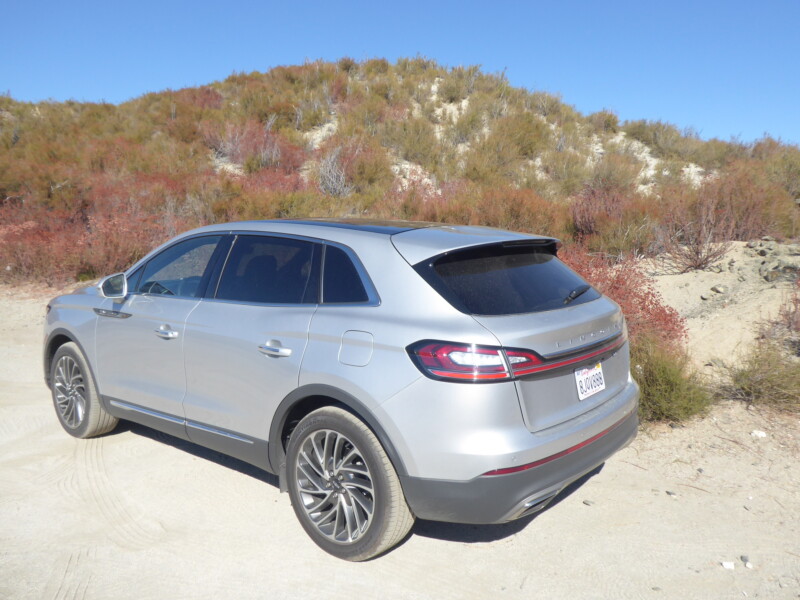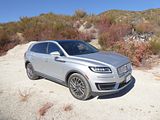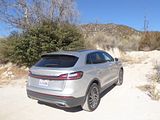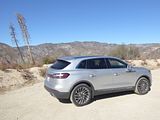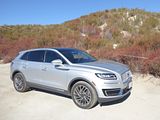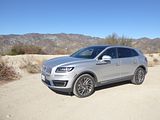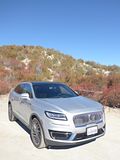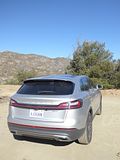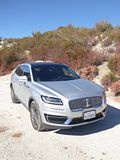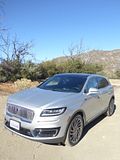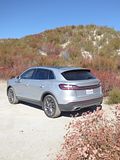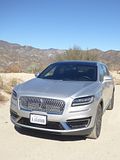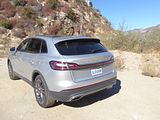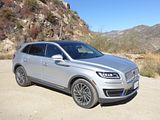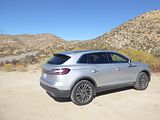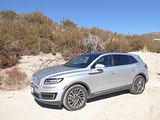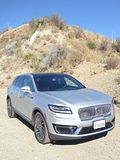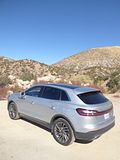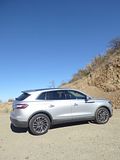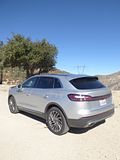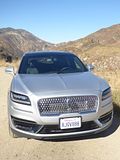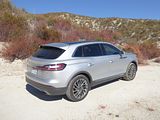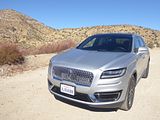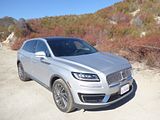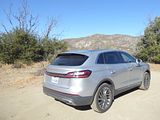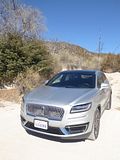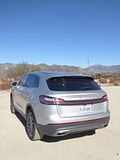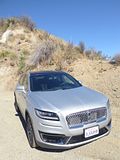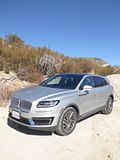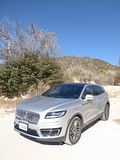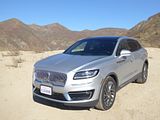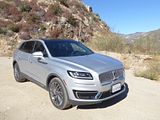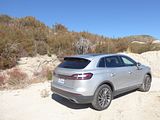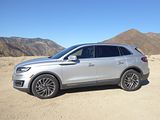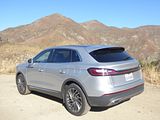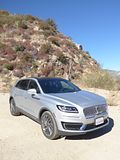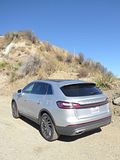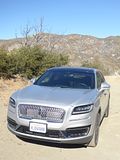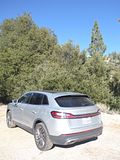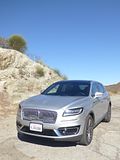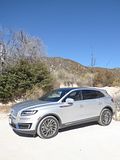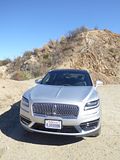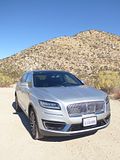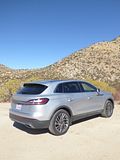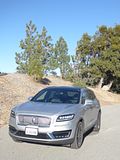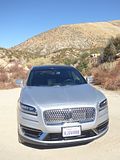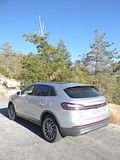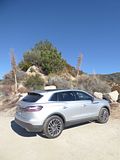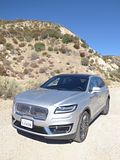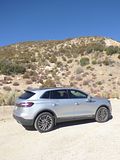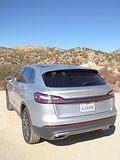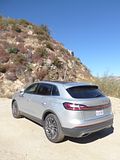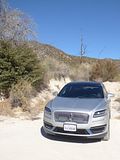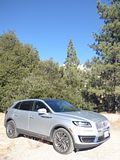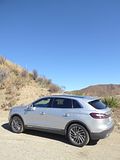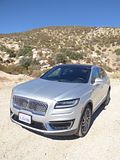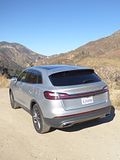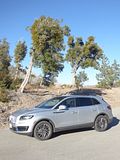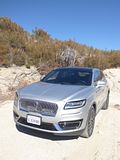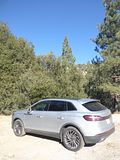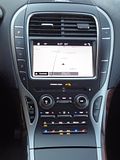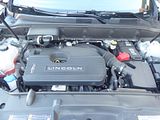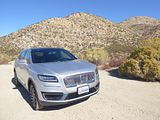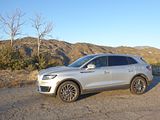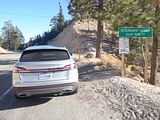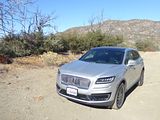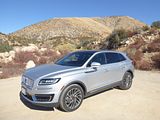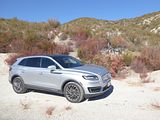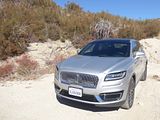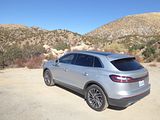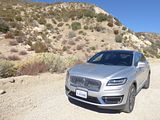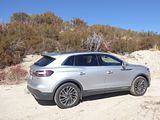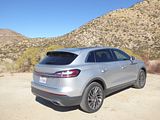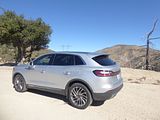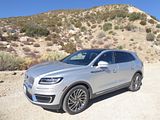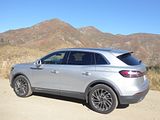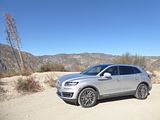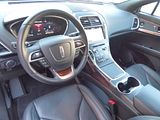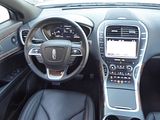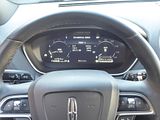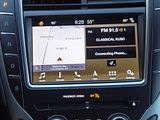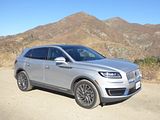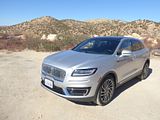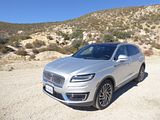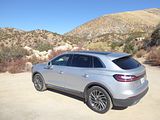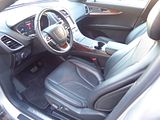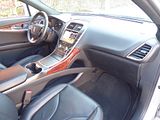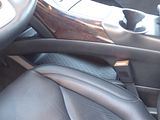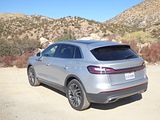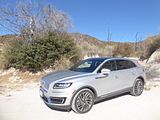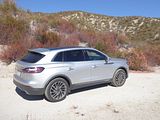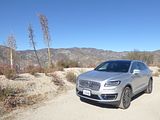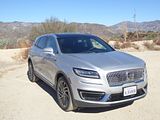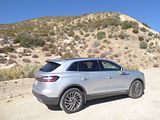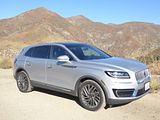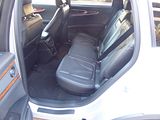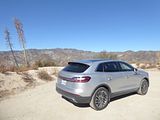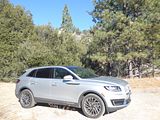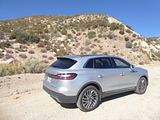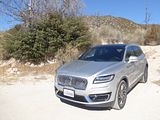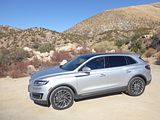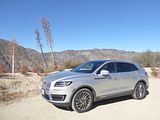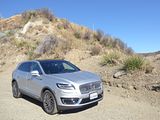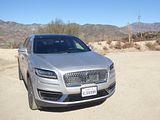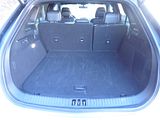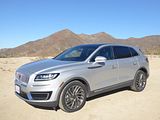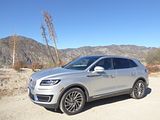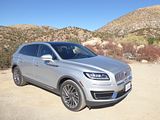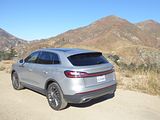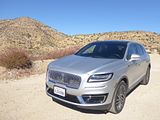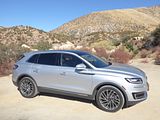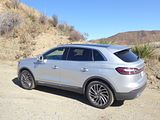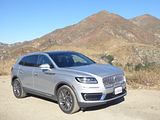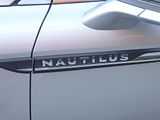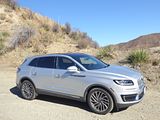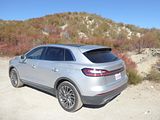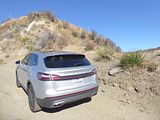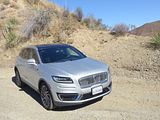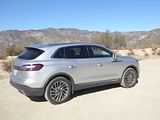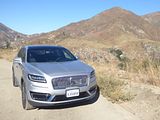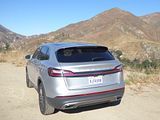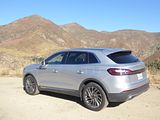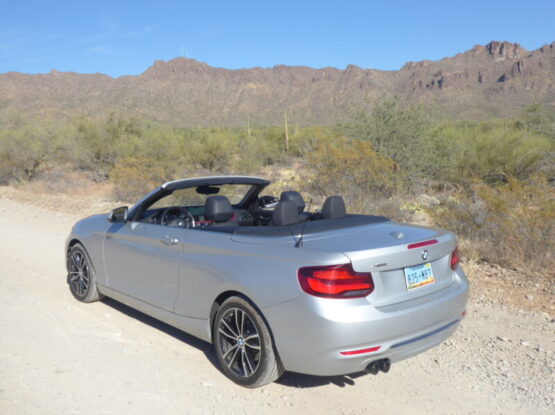As car makers expanded the number of different models they would offer, so they needed to think of new names for their additional products. Some took the easy route of dusting off a model name from the back catalogue, though when they applied a well-loved name to a different type of product, as Ford dud with the Puma and Mitsubishi with the Eclipse, there were more than a few howls of protest. Ohers found either that they had or they could invent some new schema which could take account of not just the current range but also some planned additions, though many have found that these can be fraught with challenges when you have used all your numbers up and you want another one. Lincoln, the prestige arm of the Ford Motor Company had surprisingly few historic names to call upon, and as they sought to rebrand themselves in the marketplace for the Tens, decided to go with the new schema approach and gradually started using a three letter name starting MK on their cars. But they never fully implemented this, thinking that the Navigator name was too strong to jettison, and the resulting alphabet soup of MKS, which was larger than an MKZ, but smaller than the closely related MKT, seemed simply to confuse everyone. So as new models stared to appear on the market from 2015 onwards, a new plan emerged, to revert to names. Dusting off the Continental name for the top of the range saloon was probably quite logical, but when they wanted a name for their mid-sized crossover, well, they clearly decided to pick something they’d never used before, with Nautilus being chosen. The car bearing this name was premiered in November 2017, with sales starting in mid 2018, as a 2019 model year car.
In fact, the Nautilus was not a new car, but rather the mid-cycle update to the car formerly known as the MKX. This was the second generation MKX. The first one was very obviously a close relative of the Ford Edge with just different front and rear end details as well as trim and equipment separating the two cars. For the second generation, first seen in 2014 and going on sale in 2015, the styling of the two was much more differentiated with a close Lincoln family resemblance evident in the grille making the car look quite unlike its cheaper brother. Under the skin, though, the cars shared almost everything, based on the Ford CD4 platform that underpins the Ford Fusion and Mondeo. Sales of the Edge were strong from the outset, but the Lincoln, priced as the premium product that its maker conceived it to be, settled at around 30,000 a year, making the car quite a rare sight. It certainly did not feature in the Hertz rental fleet, so I never got to sample one before the name change. Nautilus brought about a significant change to the front-end styling with a new single piece grille not unlike that which you see on current Jaguars being adopted, as is the case across the Lincoln range now, and there were also changes to the engines with the previously standard 3.7 litre V6 from the Mustang being replaced by a 2.0 Turbo four with an automatic box with two more ratios and the addition of a whole load more safety features. Hertz seem to have bought quite a few of these cars and so when I arrived at the LAX facility eager to continue my Lincoln experience having just had a day with the Continental saloon, I was easily able to secure one to test out.
The entry level engine in a Nautilus is a 2.0 litre Turbo 4 and that is what was fitted to the test car It develops 250 bhp and generates 280 lb/ft of torque. There is a eight speed automatic transmission. Front wheel drive is standard, though all-wheel drive is a cost option on some models. You can also have more power with a 2.7 litre twin turbo V6 which puts out 335 bhp and 380 lb/ft of torque. Although this is quite a big and heavy car, the 250 bhp engine is actually surprisingly well up to the task, and the Nautilus goes quite well, with decent acceleration available whenever you need it. More to the point, perhaps, for a luxury car, the engine is refined and noise levels are low, so this is a relaxing and refined cruiser for a long journey. I actually took it up into the canyons north of LA, and hopped in and out all day so did not have a really long stint behind the wheel. That all amounted to 190 miles and it needed 7.1 gallons to fill it before I handed it back, which computes to 26.76 mpg US or 31.97 mpg Imperial, which is a good result
As a product of the Ford Motor Company, you might reasonably expect that this will be a great machine to drive with class leading steering and handling. Sadly, this did not quite prove to be the case. The steering certainly has decent feel and generally is not overly assisted but there was an odd sensation with it when just off centre. I suspect that the addition of the latest safety features such as Lane Keep Assist may have something to do with this, and certainly that was a feature that I turned off early in the day, as I suspect most people would do. The car did hold the road well, though and felt tidy through the many bends on those canyon roads. This version of the Nautilus came on relatively high profile but large wheels, 245/50 R20s, and perhaps as a consequence, it rode well, with just the ride mid point between firm and over-soft. The cabin of the car is very light and airy, thanks to a massive sun roof, but like so many cars these days, visibility is not brilliant, with that over the shoulder being particularly challenged. At least there is Ford’s neat solution of an extra piece of glass in the door mirrors to address the blond spots and there are parking sensors and cameras to help when reversing and you want to judge exactly where the back of the Lincoln might be.
Although there was something of a family resemblance to the interior of the Nautilus and the MKC, all the details are different. The dash design continues down in a swooping single piece into the high-set centre console, for a start, and although some of the components such as column stalks and the infotainment unit are the same, details such as the instruments are different. Lots of leather is used on the dashboard and the door casings, and the test car featured wood inlays, which were rather too glossy looking for my tastes, but which would no doubt appeal to many. Certainly everything seemed to fit together well and the overall design was cohesive. The instruments panel appears blank until you start the car, and then the dials are lit, but only the portion that is in use, so as you build up speed, a great part of the arc of the speedometer goes from greyed out to lit up. There are just two dials for speed and revs, with smaller horizontal bar charts for water temperature and fuel level set in the base of these, respectively. The Nautilus uses the same column stalks as you will find in other Lincoln and indeed Ford products and the buttons on the steering wheel boss for audio repeater and cruise control are also common to many other products from the range. There is keyless starting, which gives a large button on the dash to the right of the wheel and below this you will find more buttons which are for the gear selections. A rotary dial to the left of the wheel controls the lights which include an auto function. The centre of the dash contains a Ford-standard 8” colour touch screen for the Sync 3-based infotainment functions, which include XM satellite radio, Apple Car Play and Android Auto as well as navigation. The sound system is by Revel. Although the screen is on the small side by modern standards and Sync 3 goes back a few years now, the whole ensemble was decently responsive and easy to use, though more and more of the functions are migrating to touch screen options rather than easier to use buttons. Beneath this unit are a bank of switches for the dual zone climate control, which includes seat heaters and fans, none of which were given a particularly tough test given the time of year.
As befits the luxury positioning of the Nautilus, there is leather upholstery and seat adjustment is all electric, as is the steering wheel. The seat powers back when the ignition is turned off, to give more space for easier access, but it did require me to set the position I wanted in the memory so it would return to where it had previously been. The seat proved supportive in all the right places and was comfortable and the width of the car plus its crossover styling give the feeling of space that adds somewhat to the feeling of ease in being here.
It is when you open the rear doors of the Nautilus that you will see the most obvious difference between it and its MKC stablemate. Whereas the MKC is not over-endowed with space here, especially if the front seats are set well back, no such issues pertain to the Nautilus. There is a lot of space here, with plenty of leg room, regardless of where the front chairs are positioned. Headroom is in copious supply and the width of this Lincoln is such that three adults could easily fit across the car. You can vary the angle of the seat backrests. There is a drop down central armrest which has the expected cupholders in the upper surface. Added comfort is provided by the rear seat heaters, the buttons for which are on the rear face of the centre console.
The boot is much larger than that of the MKC, too. Whilst not particularly deep from floor level to the window line, even though the test car was lacking a load-bay cover, it is long, much much longer than that of the MKC, and there is ample width across, so you really could pack plenty in here. The load bay is flush with the base of the tailgate, so sliding heavy items would be relatively easy. And access is gained through an electrically assisted tailgate, which is useful as it is heavy. Apparently, this one had the feature where you kick your foot under the bumper to release it, but despite trying a number of times, I never got this to work, and relied on the button, which was well off-centre, but handily signed, to initiate the opening process. More space can be created by dropping the asymmetrically split rear seat backrests down. You can do this by pulling on levers on the side of the backrests, or there is electrical assistance with buttons set on the side of the boot. They only work to lower the seats, there being no corresponding operation to raise them. The extended area is long and almost completely flat. There is a space saver spare wheel under the boot floor. Packaging is such that there is no significant room for anything else to be hidden under the floor with it. Inside the cabin, there is a decently sized glovebox, there are bins on all four doors, a deep cubby under the central armrest with a small tray in the top, and there is a stowage area under the raised centre console, although like most such, it is not that easy to access. Those in the rear get map pockets in the back of the front seats as well as bins on the doors.
The Nautilus comes in four trims: base, Select, Reserve, and Black Label. The base trim comes well-equipped, and many buyers will be just fine with it. However, it’s also the only trim that doesn’t offer the V6 engine. Many will feel It worth considering the Select and Reserve trims whether or not you want the V6. The Select offers some comfort and convenience features that the base trim doesn’t, and the Reserve lets you add driver assistance features that you won’t find in lower trims. The base Nautilus carries a starting price of $40,340. It comes with a 250 bhp turbo-four engine, an eight-speed automatic transmission, and front-wheel drive. Standard features include heated front seats, a hands-free power liftgate, Lincoln’s Co-Pilot360 suite of active safety technology, and the SYNC 3 infotainment system with an 8-inch touch screen, a 10-speaker audio system, satellite radio, Bluetooth, a Wi-Fi hot spot, Apple CarPlay, Android Auto, and two USB ports. You can add all-wheel drive for $2,495 and a rear-seat entertainment system for $1,995. This is the only trim not available with the twin-turbo V6 engine. The Nautilus Select starts at $44,545. In addition to the base trim’s features, the Select comes with leather upholstery, a heated steering wheel, wireless device charging, and navigation. You can upgrade to the 335 bhp twin-turbo V6 for $2,070 and add all-wheel drive for $2,495 (all-wheel-drive Select models also get an adaptive suspension). Other options include a rear-seat entertainment system for $1,995, a panoramic sunroof for $1,700, a 13-speaker Revel audio system for $1,175, and the Climate package ($785), which adds heated rear seats and rain-sensing windshield wipers. The Nautilus Reserve has a starting price of $48,875. It comes with an adaptive suspension, ventilated front seats, heated rear seats, a panoramic sunroof, a 13-speaker Revel audio system, and HD Radio. In addition to the options available in lower trims, the Reserve offers the Driver Assistance package ($1,590) and the Technology package ($1,720). The Driver Assistance package includes adaptive cruise control and evasive steering assist, while the Technology package adds a 360-degree camera, front parking sensors, and parallel and perpendicular park assist. You can also add 22-way power-adjustable multicontour massaging front seats for $1,500. The Nautilus Black Label starts at $56,895. It comes with Venetian leather upholstery, a 19-speaker Revel audio system, and several styling touches and other accessories not available in other Nautilus trims. Any features available in lower trims are offered in the Black Label. With no badging to indicate the version I was driving, I am still not sure whether I had a Select with all the options ticked apart from the rear seat entertainment system, or a Reserve, as the test car featured everything that is visibly added to the Reserve.
I was quite impressed by the Nautilus. It went well, and was generally good to drive. It proved comfortable, was spacious inside and the level of fit and finish was what you would expect of a premium-badged car. It certainly did not feel like its maker had just taken a Ford Edge and applied tinsel, something which Ford Motor Company have been guilty of doing in the past. If you want a US Domestic product then its only real rival is the Cadillac XT5, and having driven one of those earlier in the year, I would say that the Lincoln is the more appealing vehicle. Look to makes with provenance elsewhere, and the Nautilus is not short of competitors: BMW X3, Mercedes GLC, Audi Q5, Volvo XC60, Infiniti QX50 and the Lexus NX are all of similar size and with equally premium ambition. They also sport premium price tags, so if it is value you are looking for, then the Nautilus probably trumps them all. But then if you are concerned about value, you may be equally attracted by rivals with a less prestige badge, and that opens up a whole load more possibilities. Take your pick! But my conclusion has to be that the Nautilus is a convincing product and you would be unlikely to be disappointed by one whether it is one you bought or, like me, one you sourced from the car rental company.

